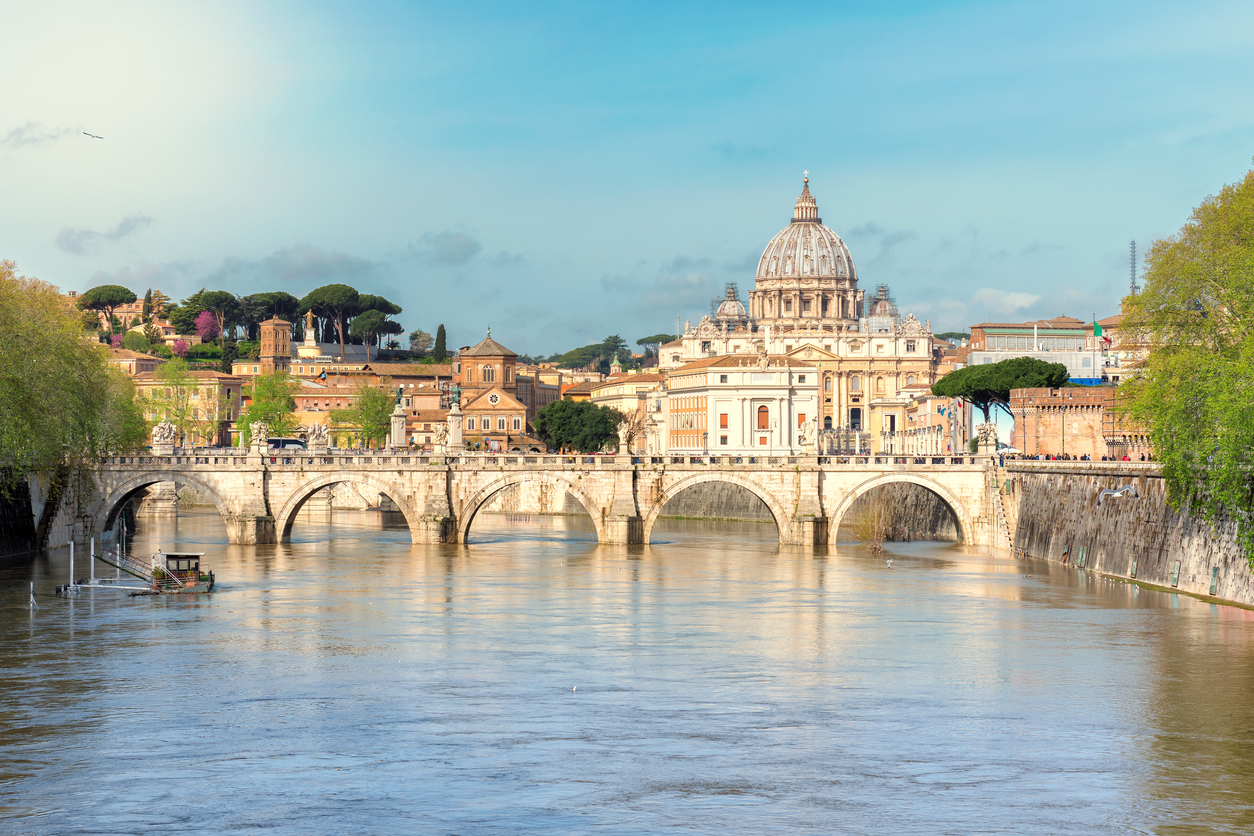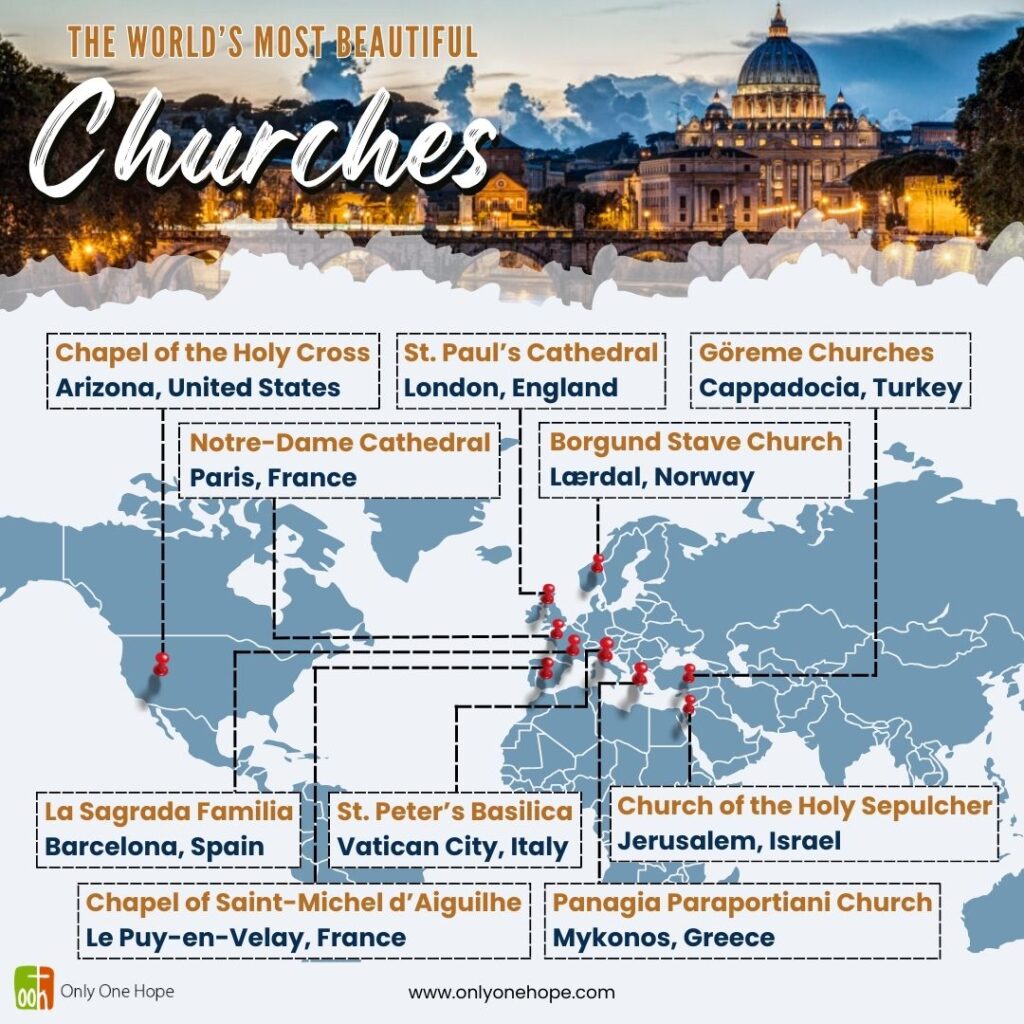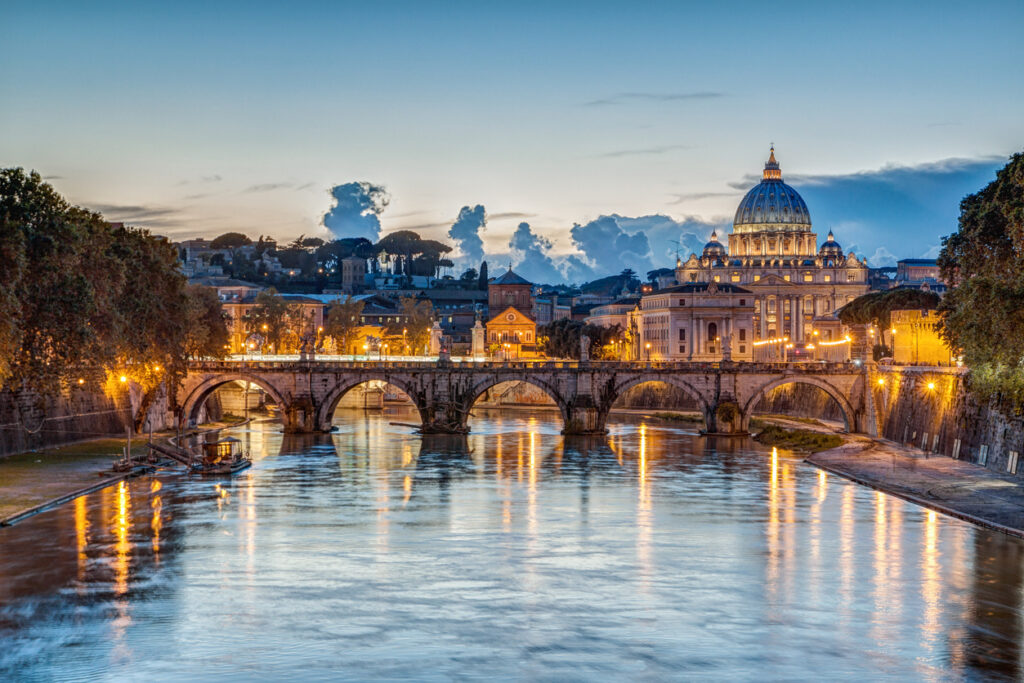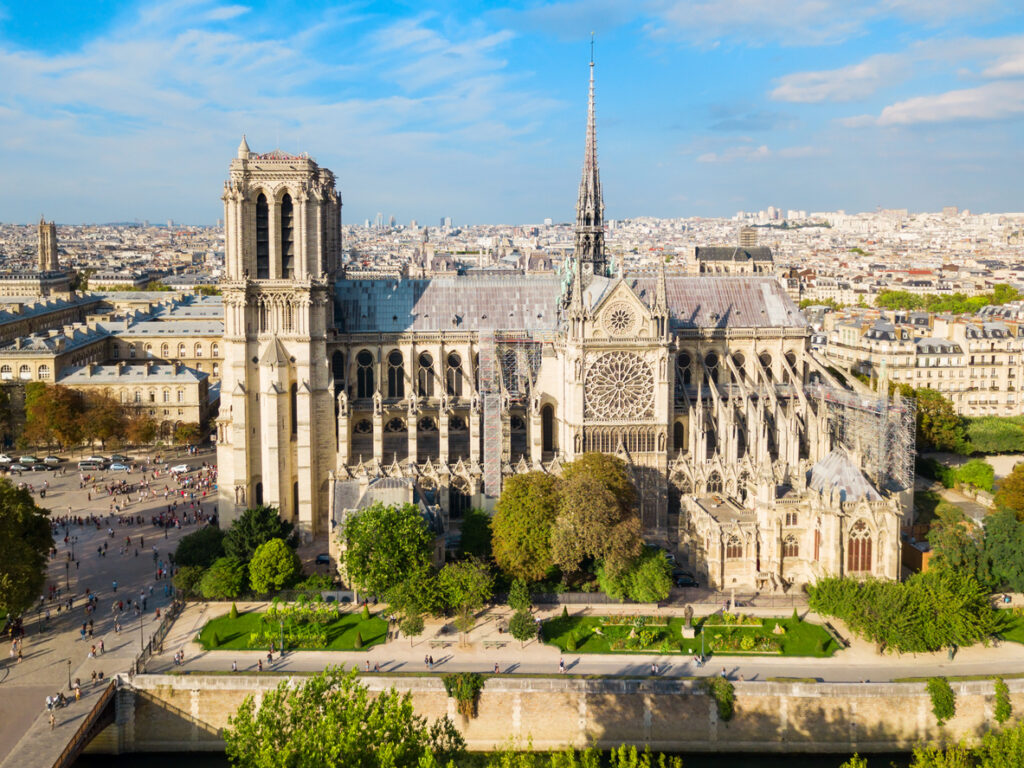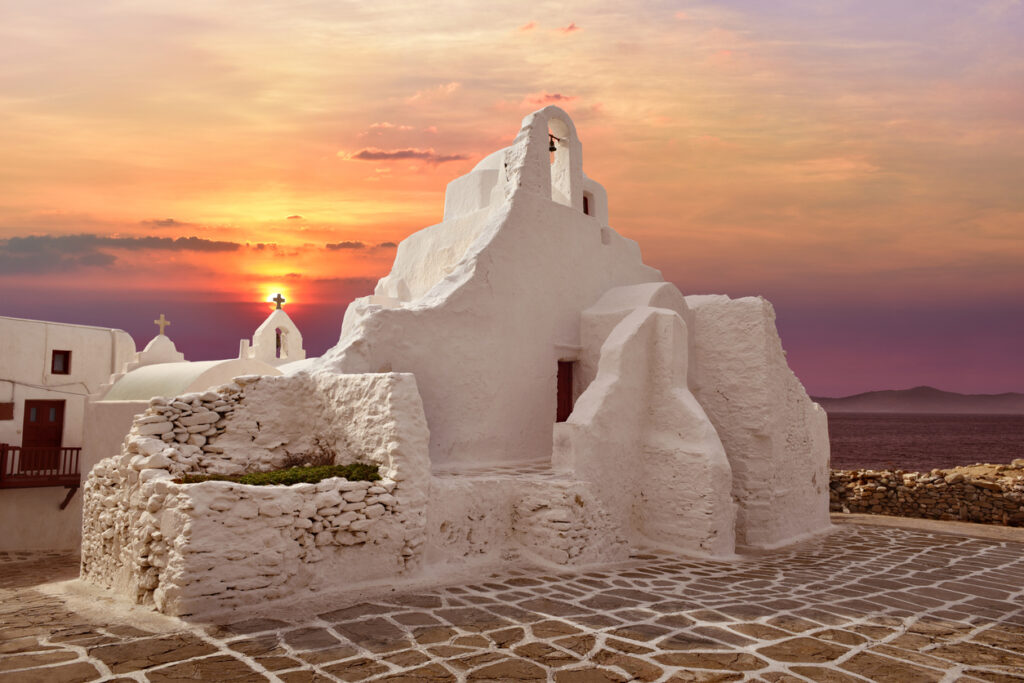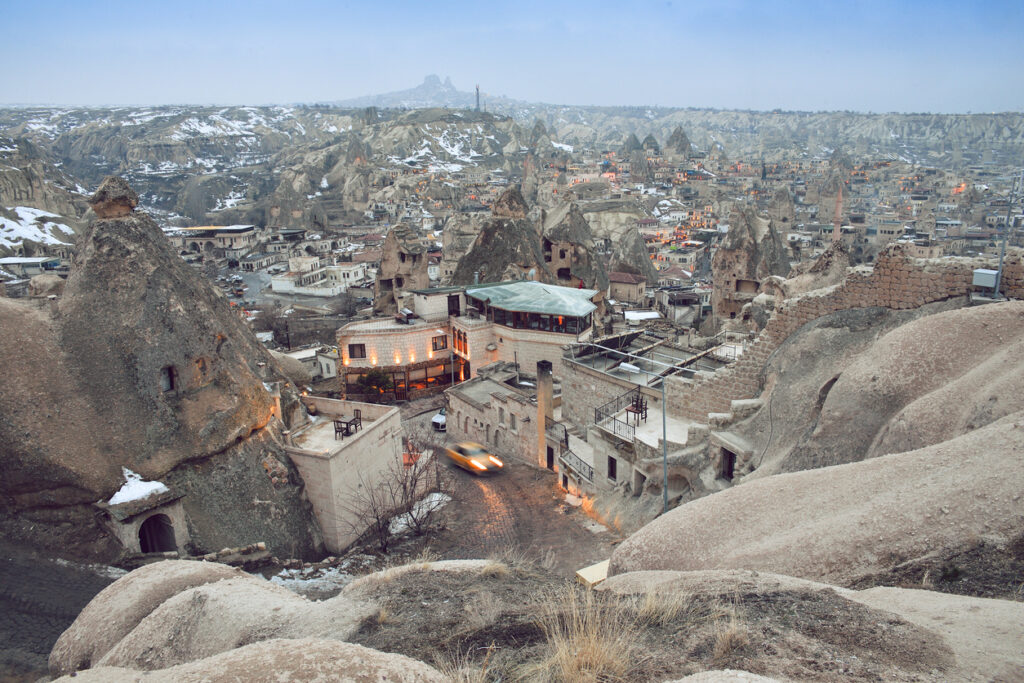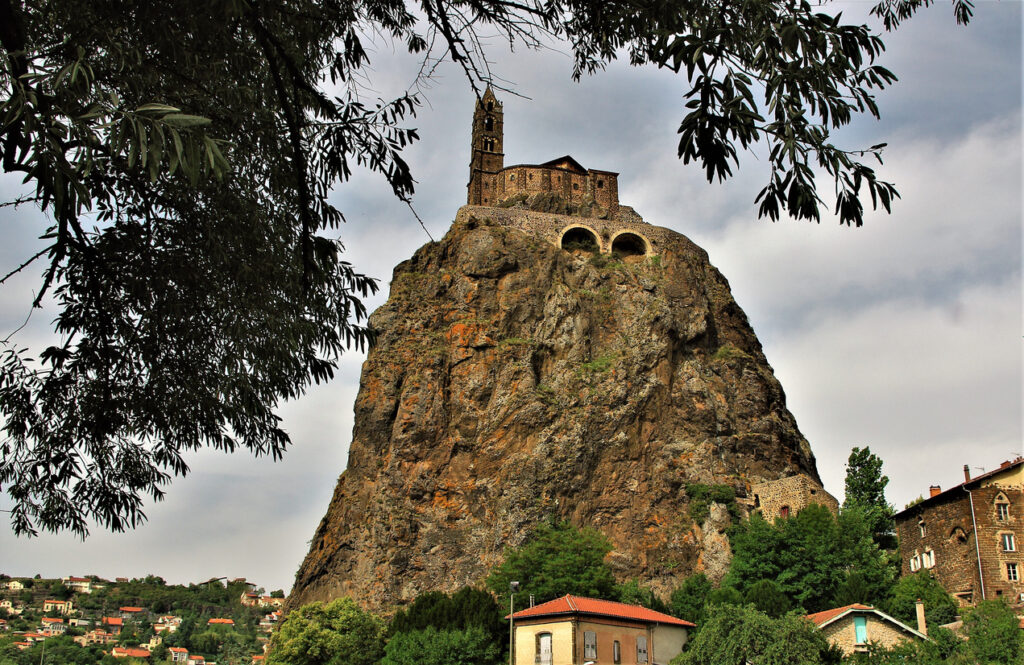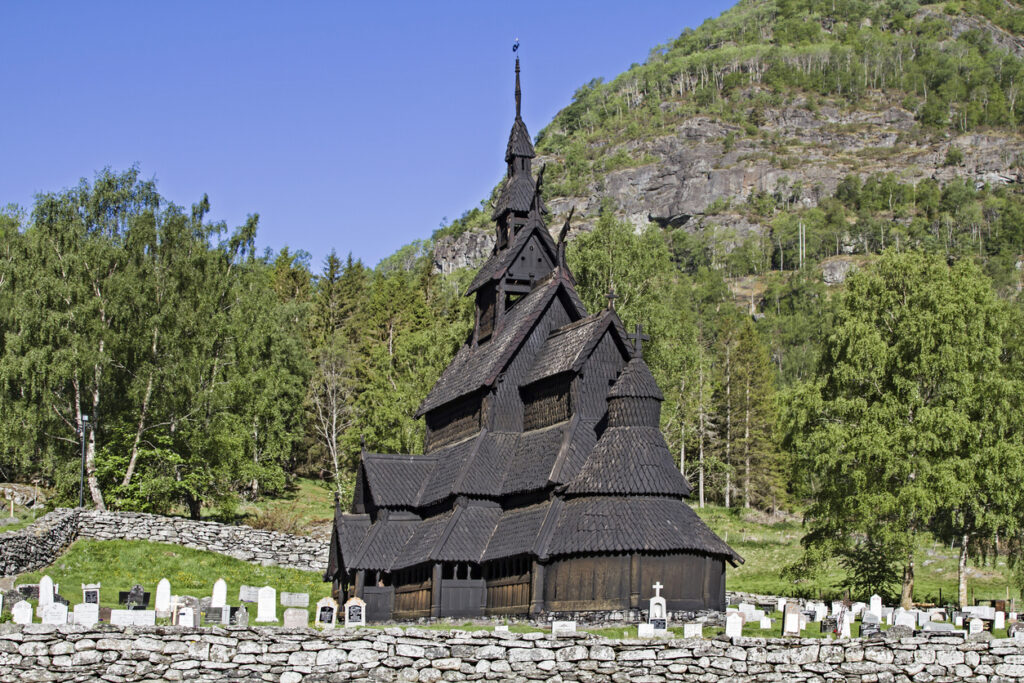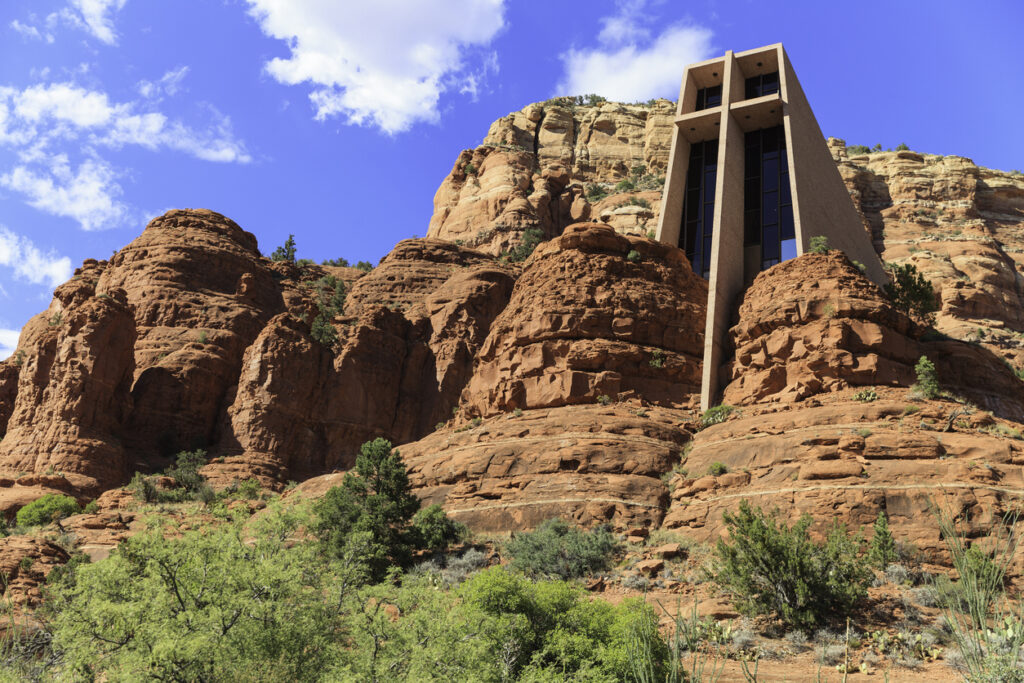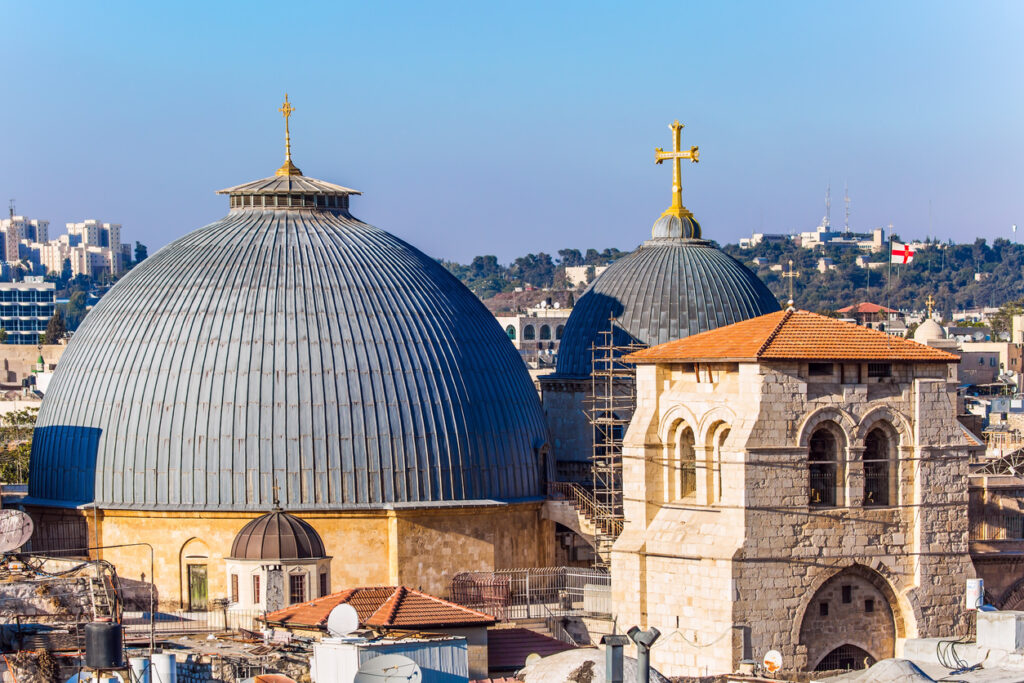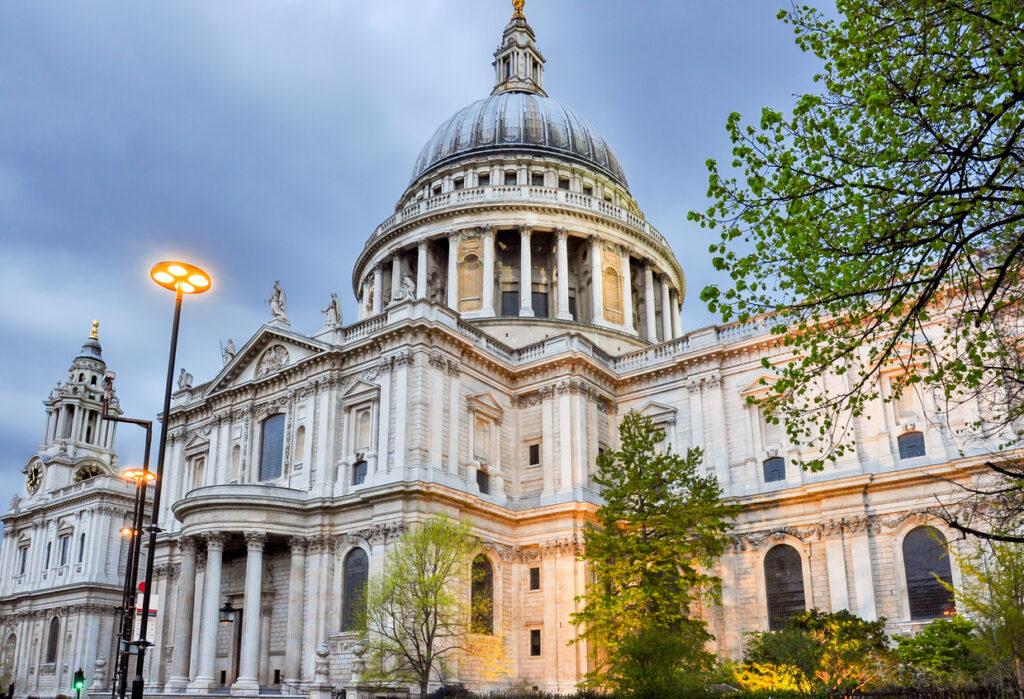Christian churches hold a special place in the realm of architecture. In addition to being places of worship, the most beautiful churches in the world also house priceless works of art, sculptures, mosaics, and paintings. Aside from that, they are also symbols of the cities they occupy, defining the skyline and hiding secrets gathered over centuries.
In this article, we are going to provide you with a list of the most beautiful churches in the world, where faith, history, and architectural splendor converge. From towering Gothic cathedrals to breathtaking Byzantine wonders, we are going to learn about the intricacies of these awe-inspiring structures that have captivated hearts and minds for many years. Read on to learn about the world’s most beautiful churches.
St. Peter’s Basilica – Vatican City, Italy
St. Peter’s Basilica is located at the heart of Vatican City. It is an iconic symbol of Catholicism and a testament to the grandeur of Renaissance architecture. It is also the largest Christian church in the world and serves as the burial site of Saint Peter, one of the twelve apostles of Jesus Christ. The basilica’s construction started in 1506, with renowned architects like Michelangelo, Bramante, and Bernini contributing to its design and execution.
The exterior façade of the church has a harmonious blend of Renaissance and Baroque elements, such as magnificent columns, intricate details, and statues. Inside, it is adorned with exquisite works of art and intricate decorations. It has a breathtaking dome designed by Michelangelo. In fact, one of the most revered treasures of the basilica is Michelangelo’s Pieta, which is a masterpiece depicting the sorrowful Mary cradling the lifeless body of Jesus.
When you visit this church, you may ascend to the top of the dome and see a panoramic view of Vatican City and Rome. St. Peter’s Basilica is not only a place of worship but also a cultural and historical landmark. It has witnessed countless papal ceremonies, including the election of new popes, and continues to be a significant pilgrimage site for millions of Catholics worldwide.
Notre-Dame Cathedral – Paris, France
The Notre-Dame Cathedral of Notre-Dame de Paris rises majestically along the banks of the River Seine, and it stands as a timeless symbol of Gothic architecture and a cultural icon of Paris. It is located on the Ile de la Cite, and it has captured the imagination of visitors for centuries. Its construction started in the 12th century and lasted for more than two centuries.
The architectural style of Notre-Dame Cathedral showcases the pinnacle of French Gothic design. It is characterized by soaring pointed arches, intricate stone tracery, and an abundance of gargoyles and sculptures. It features iconic flying buttresses that support the structure while adding to its aesthetic appeal. As you approach the cathedral, you are greeted by its elaborate façade, designed with many sculptures depicting biblical scenes and saints.
Inside the Notre-Dame Cathedral, you will see ethereal light filtering through the magnificent stained glass windows, depicting biblical narratives and vibrant hues. The most iconic feature of the cathedral is its towering nave that reaches a height of over 35 meters or 115 feet, creating a sense of verticality and transcendent beauty.
Notre-Dame Cathedral has witnessed numerous historical events, including coronations and significant religious ceremonies. It became widely known through Victor Hugo’s novel “The Hunchback of Notre-Dame,” further cementing its place in popular culture. However, in 2019, a devastating fire damaged parts of the cathedral, including its spire. But restoration efforts are done to preserve and restore it to its former glory.
Notre-Dame Cathedral stands as a testament to human ingenuity, artistic prowess, and religious devotion. It remains a beloved symbol of Paris, an architectural masterpiece that has inspired countless generations, and a testament to the resilience of a city and its people.
La Sagrada Familia – Barcelona, Spain
La Sagrada Familia is a testament to the visionary genius of Antoni Gaudi. It is his unfinished masterpiece and the most visited attraction in Spain. It towers above the elegant Eixample district in Barcelona, and it is the work of a stunning mastermind. While it is still under construction, it showcases a unique blend of modernist, Art Nouveau, and Gothic elements, which defy conventional architectural norms.
It was in 1882 when the construction of La Sagrada Familia started. Gaudi dedicated the latter part of his life to the design and development of the church until his untimely death in 1926. The completion of the church is still ongoing, with an expected finish date in the coming years. It embodies the belief of Gaudi that “his client is not in a hurry.”
The exterior of La Sagrada Familia features intricate facades designed with complex structures and nature-inspired motifs. Its nativity façade depicts the birth of Jesus, and it exemplifies the organic approach of Gaudi with highly detailed stone carvings and imaginative forms that seem to come alive. Inside the church, the columns look like towering trees that branch out and spread their weight, creating a mesmerizing forest-like atmosphere.
One of the most popular aspects of this church is its integration of symbolism and Christian narratives within its design. Its facades are adorned with scenes from the Bible, and it also has sculptural elements that reflect the life of Christ. This church is not just a church, but also a living testament to the architectural vision of Gaudi and the dedication of countless craftsmen and architects.
Panagia Paraportiani Church – Mykonos, Greece
The Panagia Paraportiani Church is nestled in the enchanting town of Mykonos in Greece. It is a captivating masterpiece of Cycladic architecture and a unique representation of spiritual devotion. Its name translates to “standing next to the door,” because the church was originally built near the medieval entrance to the town. It was constructed over several centuries, and it is actually a cluster of several chapels, forming a harmonious composition that showcases the evolution of architectural styles.
What sets this church apart from other churches in the world is its distinctive whitewashed walls and asymmetrical design. The incorporation of different architectural influences, including Byzantine, vernacular, and Venetian styles, creates a truly enchanting and one-of-a-kind structure. The Panagia Paraportiani Church is dedicated to the Virgin Mary (Panagia). Its central chapel is designed with beautiful icons and religious artifacts.
The Panagia Paraportiani Church has become an iconic symbol of Mykonos and is considered one of the most photographed churches in Greece. Its unique architectural character, blending local traditions with external influences, has made it a beloved cultural landmark and a testament to the enduring spirit of faith and artistic expression.
Göreme Churches – Cappadocia, Turkey
In the unique landscapes of Cappadocia in Turkey is the Göreme region, which is home to a fascinating collection of ancient rock-cut churches that have stood the test of time. These remarkable churches are carved into soft volcanic rock. They are a testament to the early Christian communities that thrived in the area.
The Göreme churches were carved out by Byzantine monks seeking refuge and solitude back in the 10th and 11th centuries. The soft rock provided a unique medium for their artistic and religious expression, which resulted in a collection of extraordinary underground chapels and churches.
One of the most notable churches in the Göreme region is the Karanlık Kilise (Dark Church). As the name suggests, the church is dimly lit, which helped preserve its intricate frescoes over the centuries. The walls of the Dark Church are adorned with scenes from the life of Jesus Christ, the Last Judgment, and various saints, all exquisitely painted with remarkable skill and artistry.
The Göreme churches are not only a testament to the religious devotion of the Byzantine Christians but also a remarkable example of the integration of architecture and art. They have been recognized as a UNESCO World Heritage Site, preserving these unique treasures for future generations to appreciate and admire.
Chapel of Saint-Michel d’Aiguilhe – Le Puy-en-Velay, France
The Chapel of Saint-Michel d’Aiguilhe is perched atop a volcanic rock pinnacle in Le Puy-en-Velay in France. It is a remarkable testament to medieval architecture and religious devotion. It is an awe-inspiring chapel that dates back to the 10th century, and it stands as a testament to human ingenuity and spiritual significance. Its unique location on top of a volcanic plug adds to its appeal. In order to reach it, visitors must climb 268 steps carved into the rock, which is a physical journey that mirrors the spiritual ascent to divine communion.
The exterior of the Chapel of Saint-Michel d’Aiguilhe showcases a harmonious blend of Romanesque and Gothic styles. The interior is relatively modest in size, creating an atmosphere of quiet contemplation. The walls are adorned with frescoes dating back to the 12th century, depicting scenes from the life of Christ, saints, and angels. These ancient artworks transport visitors back in time, offering a glimpse into the religious and artistic expressions of the medieval period.
The Chapel of Saint-Michel d’Aiguilhe stands as a remarkable architectural achievement and a testament to the enduring power of faith. It serves as a pilgrimage site, a cultural landmark, and a reminder of the dedication and craftsmanship of those who came before us.
Borgund Stave Church – Lærdal, Norway
Located in the scenic landscape of Lærda, Norway, the Borgund Stave Church is a captivating example of medieval wooden architecture and a remarkable symbol of Norwegian cultural heritage. Dating back to the 12th century, this well-preserved stave church is a testament to the enduring craftsmanship and religious devotion of the Viking Age.
The Borgund Stave Church is characterized by its distinctive design, featuring intricate wooden details and robust construction. The church is built entirely of wood, with vertical staves forming the structural framework and supporting the walls. The exterior is adorned with intricate carvings, often depicting scenes from Norse mythology and Christian symbolism.
One of the most fascinating features of the Borgund Stave Church is the surrounding graveyard, where ancient wooden stave tombs stand as silent reminders of the past. These intricate wooden structures, resembling miniature churches, are a unique and rare sight. Even though this church is very old, it has been carefully preserved and restored over the centuries, ensuring that visitors can appreciate its authentic beauty and historical significance.
Chapel of the Holy Cross – Arizona, United States
The Chapel of the Holy Cross is perched dramatically on the red rock cliffs of Sedona, Arizona. It is a breathtaking architectural marvel that blends seamlessly with its natural surroundings. It was built in the 1950s, and it is a spiritual sanctuary and a testament to human creativity and faith. The chapel was designed by Marguerite Brunswig Staude, a student of renowned architect Frank Lloyd Wright. Staude was inspired by the towering rock formations of Sedona and envisioned a place of worship that would blend with the natural beauty of the landscape.
Approaching the chapel, visitors are greeted by a monumental cross, symbolizing the central tenets of Christianity. As you step inside, the chapel’s simple and elegant design creates a serene and contemplative atmosphere. The focal point of the Chapel of the Holy Cross is the magnificent window behind the altar, which offers a breathtaking view of Sedona’s landscape. This strategic placement of the window allows visitors to feel a reflective sense of spiritual transcendence, as they are immersed in the grandeur of the natural world while engaging in prayer or reflection.
Church of the Holy Sepulcher – Jerusalem, Israel
The Church of the Holy Sepulcher is located in the heart of Jerusalem’s Old City. It is one of the most sacred and revered sites in Christianity. It is a symbol of deep religious significance, believed by many to be the place of Jesus Christ’s crucifixion, burial, and resurrection. Its history dates back to the 4th century when Emperor Constantine the Great ordered its construction. The church includes several key areas, each associated with a specific event in Jesus’ final days. These include Golgotha, the site of the crucifixion, and the Aedicule, which houses the tomb where Jesus is said to have been buried and resurrected.
The exterior of the church is an impressive architectural ensemble, reflecting various influences and periods of history. The interior is a labyrinth of chapels, corridors, and sacred spaces, each adorned with ornate decorations and religious icons. The atmosphere is filled with reverence and devotion as pilgrims from around the world gather to pay their respects and offer prayers at the holiest of Christian sites.
St. Paul’s Cathedral – London, England
St. Paul Cathedral stands as an iconic symbol of London’s skyline. It is a magnificent masterpiece of architecture, spirituality, and historical significance. It is an Anglican cathedral that has played a major role in the religious and cultural life of England for hundreds of years. The cathedral was designed by Sir Christopher Wren in the late 17th century, and it is a striking example of English Baroque architecture.
The cathedral’s highlight is undoubtedly the dome, which rises to an impressive height and offers breathtaking views of the surrounding city. Ascending the winding staircase to the Whispering Gallery, visitors can marvel at the intricate mosaics and paintings that adorn the dome’s interior. For those willing to climb even higher, the Golden Gallery provides a panoramic vista of London, rewarding the adventurous with a stunning view.
Conclusion
The world is indeed blessed with an array of magnificent Christian churches, each having its own unique history, beauty, and spiritual significance. These churches have touched the hearts and souls of many people throughout the centuries, and they continue to inspire, evoke a sense of wonder, and offer spaces for reflection, worship, and connection with the divine. These are just a few of the many more beautiful churches around the world. Let us continue to explore, appreciate, and celebrate architectural wonders, spiritual sanctuaries, and cultural treasures that grace our world. We hope this article helped you learn more about the most beautiful churches in the world.

